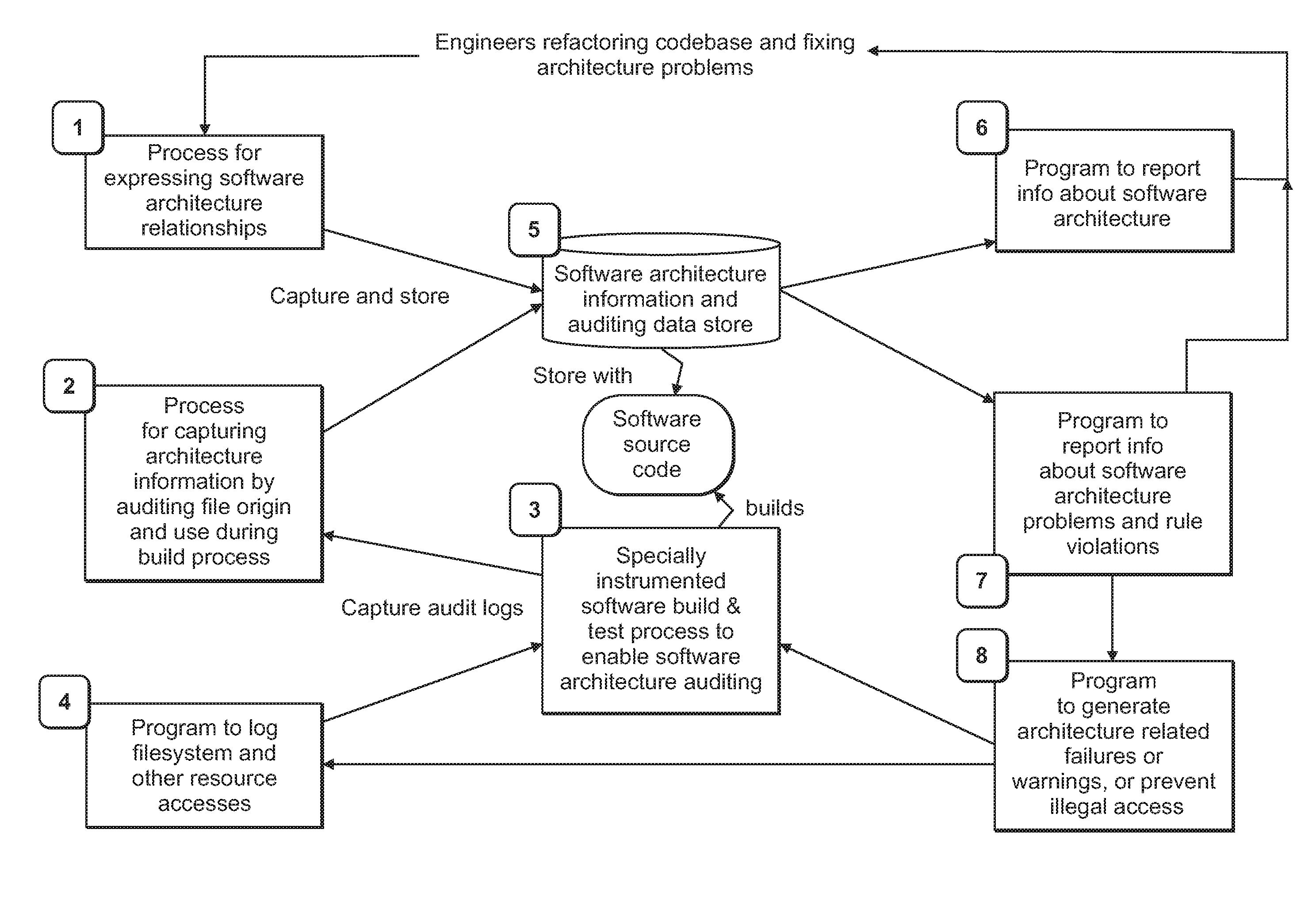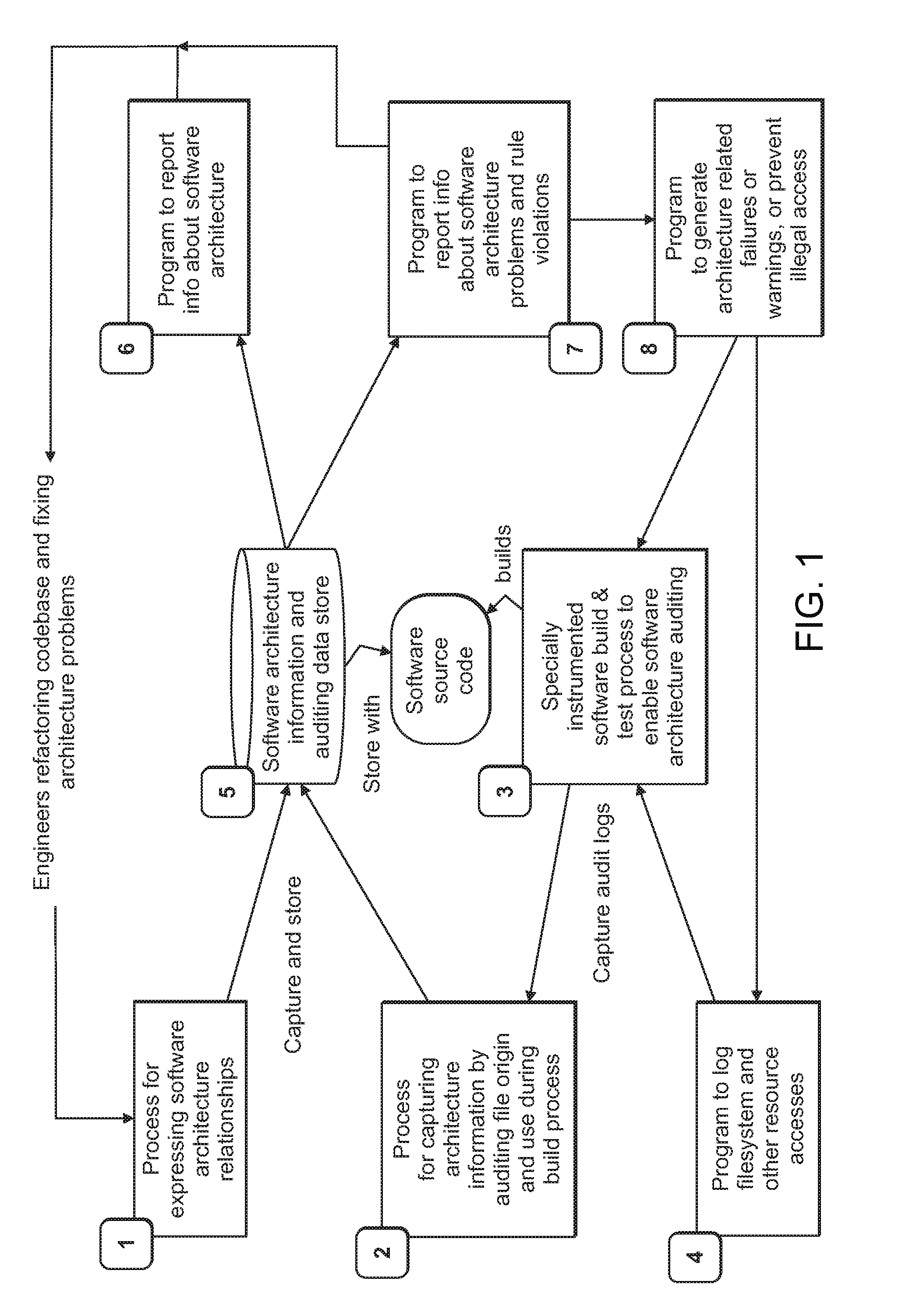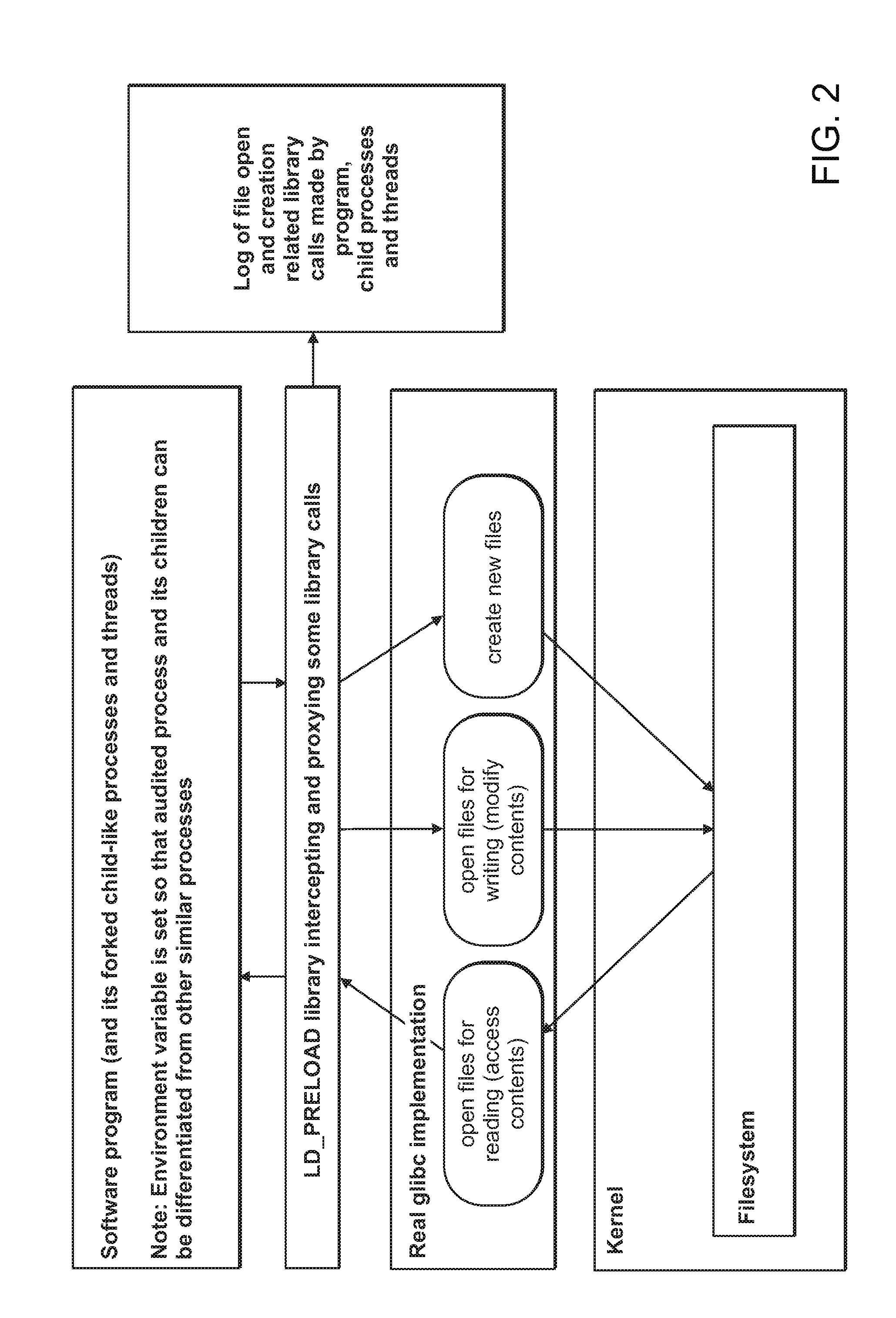Computer-implemented tools and methods for extracting information about the structure of a large computer software system, exploring its structure, discovering problems in its design, and enabling refactoring
a computer-implemented tool and software system technology, applied in the field of computer-implemented methods and systems for analyzing large software systems, can solve problems such as man-made disaster, project failure, business failure, etc., and achieve the effects of reducing the probability of failur
- Summary
- Abstract
- Description
- Claims
- Application Information
AI Technical Summary
Benefits of technology
Problems solved by technology
Method used
Image
Examples
Embodiment Construction
[0022]In accordance with one or more embodiments, a set of interrelated processes and technologies are provided that can be used by leaders in a software development organization to manage the development or improvement of large and complex software codebases by systematically targeting, eliminating, and preventing architectural complexity and better managing their structure at a high-level. The interrelated processes and technologies described herein are useful in combination, and some are also useful individually for more targeted or more general purposes.
[0023]The processes and technologies described herein are enabling facets of a methodology for refactoring large, complex, and potentially problematic codebases. They may also be used to maintain architectural quality after refactoring or to prevent architecture problems from developing. This methodology can help hundreds of engineers and managers across a development organization, all working on a large codebase or interrelated ...
PUM
 Login to View More
Login to View More Abstract
Description
Claims
Application Information
 Login to View More
Login to View More - R&D
- Intellectual Property
- Life Sciences
- Materials
- Tech Scout
- Unparalleled Data Quality
- Higher Quality Content
- 60% Fewer Hallucinations
Browse by: Latest US Patents, China's latest patents, Technical Efficacy Thesaurus, Application Domain, Technology Topic, Popular Technical Reports.
© 2025 PatSnap. All rights reserved.Legal|Privacy policy|Modern Slavery Act Transparency Statement|Sitemap|About US| Contact US: help@patsnap.com



